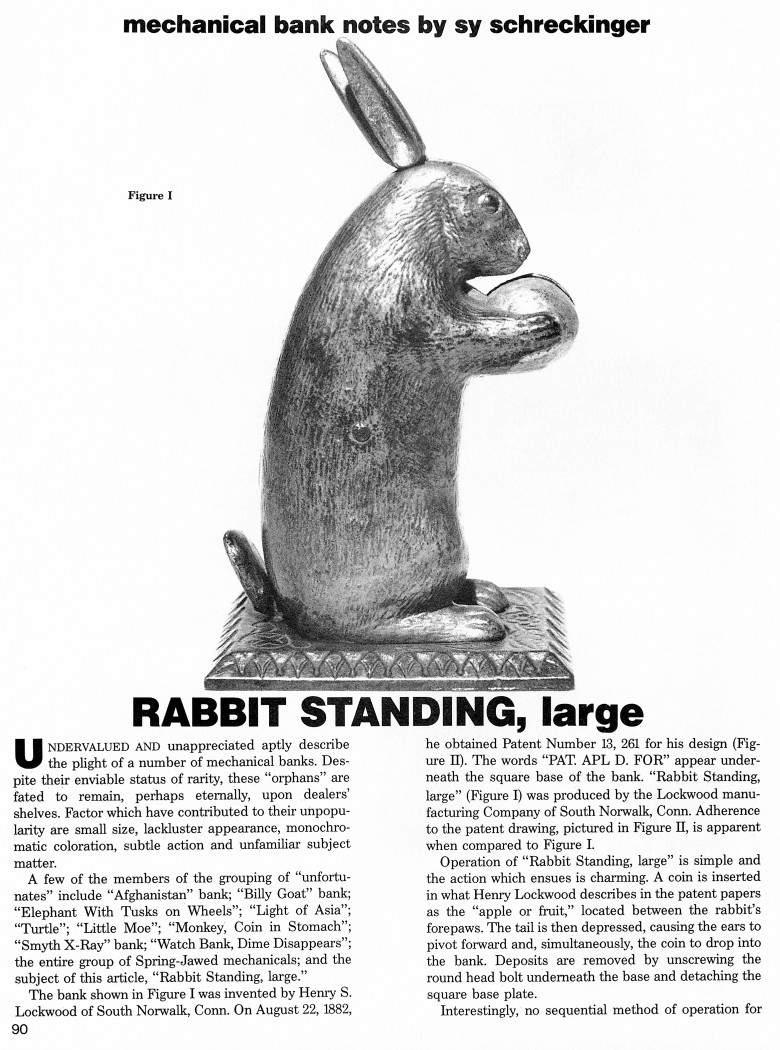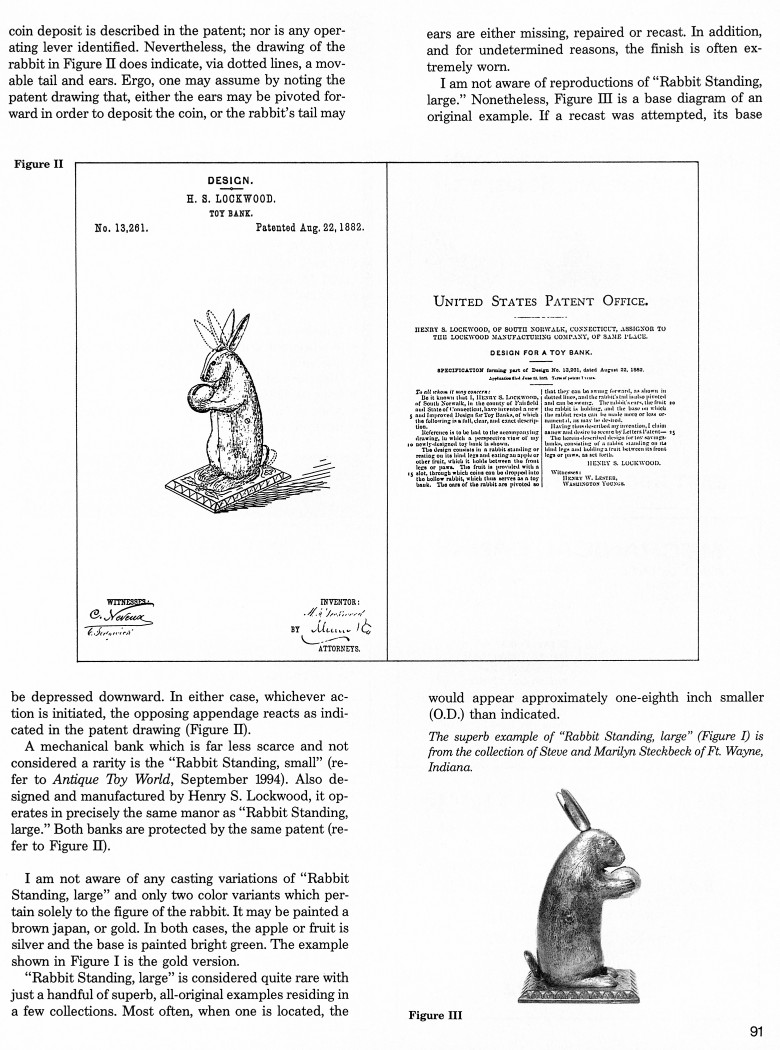|
Rabbit Standing, large
by Sy Schreckinger – ANTIQUE TOY WORLD Magazine – October, 1994
Undervalued and unappreciated aptly describe
the plight of a number of mechanical banks. Despite their enviable status
of rarity, these "orphans" are fated to remain, perhaps eternally, upon
dealers' shelves. Factor which have contributed to their unpopularity are
small size, lackluster appearance, monochromatic coloration, subtle action
and unfamiliar subject matter.
A few of the members of the grouping of "unfortunates" include
"Afghanistan" bank; "Billy Goat" bank; "Elephant With Tusks on Wheels";
"Light of Asia"; "Turtle"; "Little Moe"; "Monkey, Coin in Stomach"; "Smyth
X-Ray" bank; "Watch Bank, Dime Disappears"; the entire group of
Spring-Jawed mechanicals; and the subject of this article, "Rabbit
Standing, large."
The bank shown in Figure I was invented by Henry S. Lockwood of South
Norwalk, Conn. On August 22, 1882, he obtained Patent Number
13,261 for
his design (Figure 111). The words "PAT. APL D. FOR" appear underneath
the square base of the bank. "Rabbit Standing, large" (Figure I) was
produced by the Lockwood manufacturing Company of South Norwalk, Conn.
Adherence to the patent drawing, pictured in Figure II, is apparent when
compared to Figure I.
Operation of "Rabbit Standing, large" is simple and the action which
ensues is charming. A coin is inserted in what Henry Lockwood describes in
the patent papers as the "apple or fruit," located between the rabbit's
forepaws. The tail is then depressed, causing the ears to pivot forward
and, simultaneously, the coin to drop into the bank. Deposits are removed
by unscrewing the round head bolt underneath the base and detaching the
square base plate.
Interestingly, no sequential method of operation for coin deposit is
described in the patent; nor is any operating lever identified.
Nevertheless, the drawing of the rabbit in Figure II does indicate, via
dotted lines, a movable tail and ears. Ergo, one may assume by noting the
patent drawing that, either the ears may be pivoted forward in order to
deposit the coin, or the rabbit's tail may be depressed downward. In
either case, whichever action is initiated, the opposing appendage reacts
as indicated in the patent drawing (Figure II).
A mechanical bank which is far less scarce and not considered a
rarity is the "Rabbit Standing, small" (refer to Antique Toy World,
September 1994). Also designed and manufactured by Henry S. Lockwood, it
operates in precisely the same manor as "Rabbit Standing, large." Both
banks are protected by the same patent (refer to Figure II).
I am not aware of any casting variations of "Rabbit Standing, large"
and only two color variants which pertain solely to the figure of the
rabbit. It may be painted a brown japan, or gold. In both cases, the apple
or fruit is silver and the base is painted bright green. The example shown
in Figure I is the gold version.
"Rabbit Standing, large" is considered quite rare with
just a handful of superb, all-original examples residing in a few
collections. Most often, when one is located, the ears are either missing,
repaired or recast. In addition, and for undetermined reasons, the finish
is often extremely worn.
I am not aware of reproductions of "Rabbit Standing, large."
Nonetheless, Figure III is a base diagram of an original example. If a
recast was attempted, its base would appear approximately one-eighth inch
smaller (O.D.) than indicated.
The superb example of "Rabbit Standing, large" (Figure I) is from the
collection of Steve and Marilyn Steckbeck of Ft. Wayne, Indiana.
CORRECTION: (from
December, 1994) Refer to Antique Toy World,
October 1994, "RABBIT
STANDING, large" Figure III. The following base diagram was inadvertently
omitted from publication.
|


